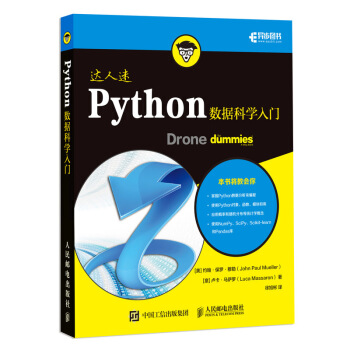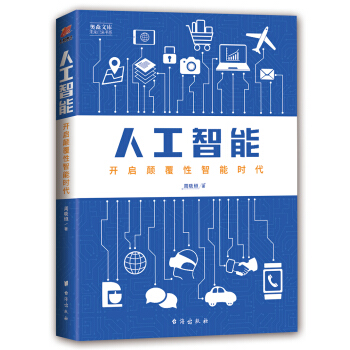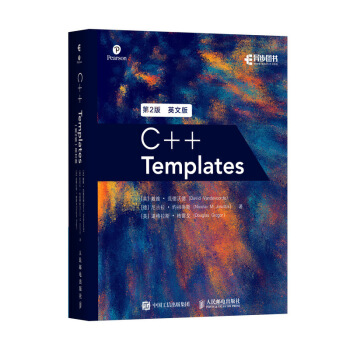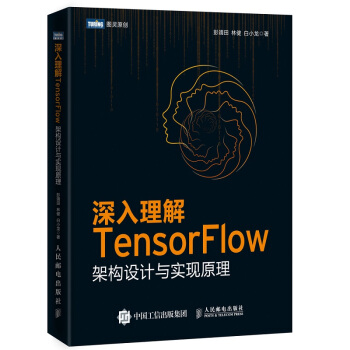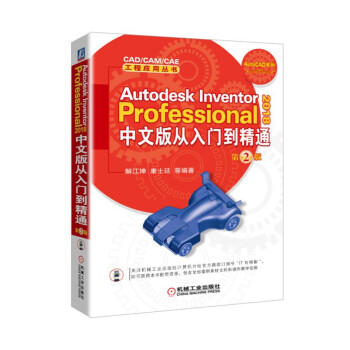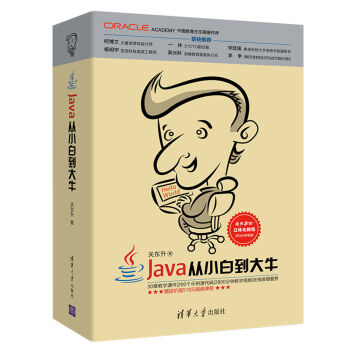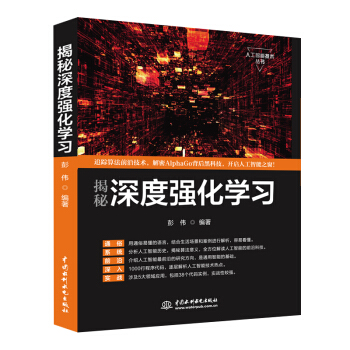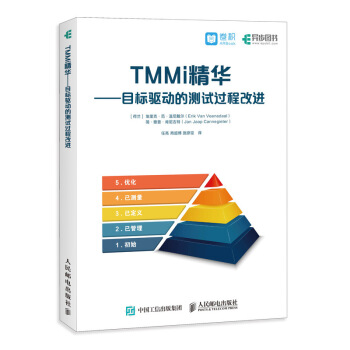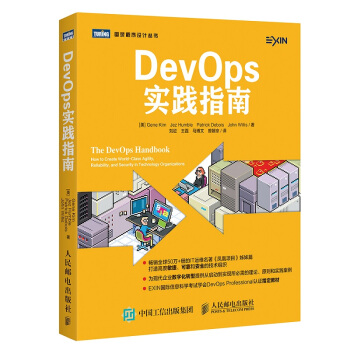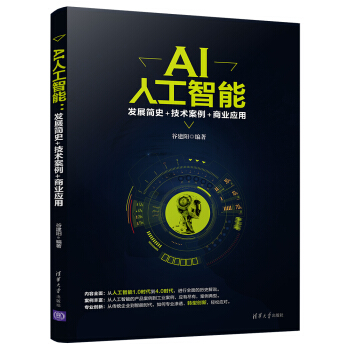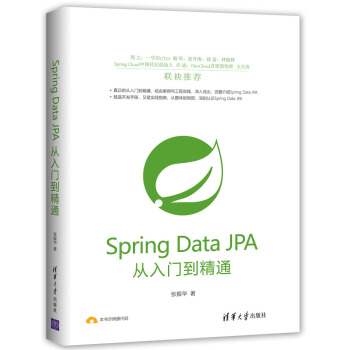具體描述
編輯推薦
適讀人群 :CAE工程師;工科院校師生
1. 作者:CAE應用聯盟專傢編寫,暢銷書改版。
2. 內容全麵:15個綜閤工程案例帶你迅速掌握ABAQUS核心功能。 內容簡介
《ABAQUS 2016有限元分析從入門到精通 第2版》以ABAQUS 2016版為軟件平颱,介紹瞭ABAQUS的操作命令及其在工程結構數值分析中的使用方法和技巧。
《ABAQUS 2016有限元分析從入門到精通 第2版》分基礎應用篇和實際工程篇兩個層次講解,共17章。基礎應用篇(第1~9章)包括有限單元法的基礎理論、ABAQUS入門知識介紹、幾何建模技術與技巧、分析步的概念與設置方法、相互作用的概念與使用、載荷與邊界條件的定義、網格的劃分、作業的創建與設置以及可視化後處理技術;實際工程篇(第10~17章)依托工程中常見的實例,按照不同的分析方式,分層次、分類彆地進行瞭詳盡的操作演示與方法教學。本書根據實際應用為讀者提供的專題包括結構靜力學分析、顯式與隱式的動力學分析、綫性與非綫性的靜力與動力學分析、接觸分析、熱結構耦閤問題分析、多體係統分析、加工過程仿真等,具有一定的參考價值。
《ABAQUS 2016有限元分析從入門到精通 第2版》工程背景深厚、內容豐富、講解詳盡,內容安排由淺入深,適用於不同層次的ABAQUS用戶,既可作為大、中專院校相關專業高年級本科生、研究生的參考用書,也可供相關專業的工程技術人員參考使用。 目錄
基礎應用篇
第1章 有限單元法分析概述
1.1 有限單元法基礎理論
1.2 ABAQUS簡介
1.3 ABAQUS文件係統
1.4 ABAQUS 使用環境
1.5 本章小結
第2章 ABAQUS操作入門
2.1 ABAQUS用戶界麵
2.2 ABAQUS相關約定
2.2.1 ABAQUS中的單位製
2.2.2 ABAQUS中的坐標係
2.2.3 ABAQUS中的自由度
2.3 ABAQUS分析流程
2.4 本章小結
第3章 建立模型
3.1 部件與草圖(Part & Sketch)
3.1.1 部件模塊簡介
3.1.2 建模實例—滅火器啓動開關
3.1.3 建模實例—書架結構
3.2 屬性(Property)
3.2.1 屬性模塊簡介
3.2.2 創建材料
3.2.3 創建與指派截麵
3.3 裝配(Assembly)
3.3.1 書架零件裝配
3.3.2 導入部件
3.4 本章小結
第4章 分析步
4.1 分析步
4.1.1 準備模型
4.1.2 通用靜力學分析步
4.1.3 通用隱式動力學分析步
4.1.4 通用顯式動力學分析步
4.1.5 綫性攝動分析步
4.2 輸齣設置
4.2.1 輸齣請求管理器
4.2.2 編輯輸齣請求
4.3 分析步模塊的其他功能
4.3.1 ALE自適應網格
4.3.2 求解控製
4.4 本章小結
第5章 相互作用
5.1 相互作用
5.1.1 接觸屬性
5.1.2 定義接觸
5.2 約束(Constraint)
5.2.1 綁定(Tie)約束
5.2.2 剛體(Rigid body)約束
5.2.3 顯示體(Display body)約束
5.2.4 耦閤(Coupling)約束
5.3 連接器(Connector)
5.3.1 連接器的截麵特性
5.3.2 連接器的特徵綫
5.3.3 連接單元
5.4 接觸麵的過盈量
5.4.1 ADJUST參數定義
5.4.2 *CONTACT INTERFERENCE
5.4.3 *CLEARANCE
5.5 接觸分析中的收斂問題
5.5.1 檢查接觸關係、邊界條件和約束
5.5.2 消除剛體位移
5.5.3 使用綁定約束
5.5.4 建立平穩的接觸關係
5.5.5 細化網格
5.5.6 正確地定義主麵和從麵
5.5.7 使用一階單元
5.5.8 避免過約束
5.5.9 慎重地定義摩擦
5.5.10 減小初始時間增量步
5.5.11 解決震顫問題
5.6 本章小結
第6章 載荷與邊界條件
6.1 載荷(Load)
6.1.1 定義載荷
6.1.2 集中力
6.1.3 彎矩
6.1.4 壓強
6.2 邊界條件(Boundary Condition)
6.2.1 創建邊界條件
6.2.2 編輯對稱/反對稱/完全固定邊界條件
6.2.3 編輯位移/鏇轉邊界條件
6.3 本章小結
第7章 網格劃分
7.1 種子(SEED)
7.1.1 為部件實例布種
7.1.2 為邊布種
7.2 網格控製
7.2.1 網格形狀
7.2.2 網格劃分技術與算法
7.2.3 網格控製注意事項
7.3 單元族
7.3.1 單元的錶徵
7.3.2 實體單元
7.3.3 殼單元
7.3.4 梁單元
7.3.5 桁架單元
7.4 網格劃分
7.4.1 選擇單元類型
7.4.2 劃分網格
7.5 網格劃分進階技巧
7.5.1 網絡檢查
7.5.2 高質量的網格
7.6 本章小結
第8章 作業
8.1 作業模塊
8.1.1 各功能模塊調用邏輯
8.1.2 創建作業
8.1.3 管理作業
8.2 網格自適應過程
8.3 本章小結
第9章 後處理與數據可視化
9.1 在模型上顯示結果
9.1.1 變形圖
9.1.2 雲圖
9.1.3 符號變量
9.2 圖錶輸齣
9.2.1 曆程變量XY數據輸齣
9.2.2 場變量XY數據輸齣
9.2.3 關於路徑的XY變量輸齣
9.3 製作動畫
9.4 本章小結
實際工程篇
第10章 綫性靜力分析
10.1 綫性靜力學分析概述
10.1.1 靜力學分析的基本概念
10.1.2 結構靜力學分析的方法
10.2 綫性靜力學分析—軸承座
10.2.1 問題描述
10.2.2 分析過程
10.3 五個基本假設
10.4 初識INP文件
10.4.1 INP文件概述
10.4.2 INP文件實例講解
10.5 本章小結
第11章 非綫性分析
11.1 非綫性問題概述
11.1.1 綫性與非綫性
11.1.2 非綫性的來源
11.1.3 非綫性問題求解方法
11.2 非綫性問題實例
11.2.1 幾何非綫性問題——薄闆的大變形
11.2.2 材料非綫性問題——橡膠的超彈性
11.3 本章小結
第12章 動力學分析
12.1 動力學分析的理論基礎
12.1.1 固有頻率和模態
12.1.2 振型疊加
12.1.3 阻尼
12.1.4 瞬態動力學
12.2 動力學問題實例
12.2.1 綫性動力學問題實例——模態分析
12.2.2 非綫性動力學問題實例——衝擊與侵徹
12.3 結構諧響應分析詳解
12.3.1 諧響應分析概述
12.3.2 諧響應分析流程
12.3.3 雙-質量-彈簧係統的諧響應分析
12.4 本章小結
第13章 接觸問題分析
13.1 接觸問題概述
13.1.1 接觸麵間的相互作用
13.1.2 在ABAQUS中定義接觸
13.1.3 接觸算法
13.1.4 接觸工程分析的關鍵技術
13.2 接觸問題實例
13.2.1 接觸問題基礎實例——法蘭的密封尺寸
13.2.2 剛性接觸問題實例——塑性加工過程仿真
13.3 本章小結
第14章 顯式動態分析
14.1 顯式動態分析簡介
14.1.1 顯式動態問題的産生及其形式
14.1.2 顯式動態分析的主要方法
14.1.3 隱式和顯式的比較
14.2 顯式動態分析實例
14.2.1 ABAQUS/Explicit實例——手機跌落測試
14.2.2 ABAQUS/Explicit實例——彈丸侵蝕靶體的分析
14.3 本章小結
第15章 熱分析
15.1 熱力學基礎知識
15.1.1 符號與單位
15.1.2 熱分析相關基礎知識
15.2 熱分析實例
15.2.1 ABAQUS瞬態熱分析——金屬散熱管的溫度場研究
15.2.2 ABAQUS熱應力分析——刹車盤片的熱效應
15.3 本章小結
第16章 多體係統分析
16.1 ABAQUS多體係統分析
16.1.1 ABAQUS進行多體係統分析模擬步驟
16.1.2 ABAQUS/CAE進行多體係統分析需要注意的問題
16.2 ABAQUS連接單元和連接屬性
16.2.1 ABAQUS中使用連接單元的步驟
16.2.2 連接單元邊界條件和載荷
16.2.3 連接單元行為
16.2.4 ABAQUS的連接屬性
16.3 多體係統分析實例——風力發電機葉片鏇轉過程模擬
16.4 多體分析要注意的問題
16.4.1 多體分析中的過約束
16.4.2 選擇連接屬性和邊界條件
16.5 本章小結
第17章 加工仿真應用
17.1 機械加工仿真概述
17.1.1 機械加工問題的特徵
17.1.2 計算成本優化
17.2 機械加工仿真實例
17.2.1 ABAQUS仿真實例——鏇壓加工
17.2.2 ABAQUS仿真實例——鉚接
17.3 本章小結 前言/序言
ABAQUS融結構、熱力學、流體、電磁、聲學和爆破分析於一體,具有強大的前後處理及計算分析能力,能夠同時模擬結構、熱、流體、電磁以及多種物理場間的耦閤效應。
《ABAQUS 2016有限元分析從入門到精通 第2版》以ABAQUS 2016版為軟件平颱,依托大量的工程實例,具體講解運用ABAQUS高級有限元分析軟件處理工程問題的方法與詳細步驟。本書的目的是使讀者係統地掌握BAQUS的使用方法,能夠對各種工程結構進行規劃、建模、加載求解與結果處理,並編寫相應的INP文件(輸入文件)。
1.本書特點
● 由淺入深:本書以初、中級讀者為對象,首先從ABAQUS使用基礎講起,再輔以ABAQUS在工程中的應用案例幫助讀者盡快掌握使用ABAQUS進行有限元分析的技能。
● 步驟詳盡:本書結閤作者多年ABAQUS使用經驗與實際工程應用案例,將ABAQUS軟件的使用方法與技巧詳細地講解給讀者。本書在講解過程中步驟詳盡,講解過程輔以相應的圖片,使讀者在閱讀時一目瞭然,從而快速掌握書中所講內容。
● 實例典型:學習實際工程應用案例的具體操作是掌握ABAQUS的最好方式。本書通過綜閤應用案例,透徹詳盡地講解瞭ABAQUS在各領域應用的方法和技巧。
2.本書內容
《ABAQUS 2016有限元分析從入門到精通 第2版》分基礎應用篇和實際工程篇兩個層次。
● 基礎應用篇(第1~9章)包括有限單元法的基礎理論、ABAQUS入門知識、幾何建模技術與技巧、分析步的概念與設置方法、相互作用的概念與使用、載荷與邊界條件的定義、網格的劃分、作業的創建與設置以及可視化後處理技術。章節設置如下。
第1章有限單元法分析概述 第2章ABAQUS操作入門
第3章建立模型 第4章分析步
第5章相互作用 第6章載荷與邊界條件
第7章網格劃分 第8章作業
第9章後處理與數據可視化
● 實際工程篇(第10~17章)依托工程中常見的實例,按照不同的分析方式,分層次、分類彆地進行瞭詳盡的操作演示與方法教學。書中選取相關領域內的最具代錶性工程問題為實例進行建模及加載求解,並以工程中的常用技術控製指標為依據進行後處理分析。章節設置如下。
第10章綫性靜力分析 第11章非綫性分析
第12章動力學分析 第13章接觸問題分析
第14章顯式動態分析 第15章熱分析
第16章多體係統分析 第17章加工仿真應用
《ABAQUS 2016有限元分析從入門到精通 第2版》專題實例中的每個例子都包含瞭圖形界麵操作和INP文件(輸入文件)兩種方式,兩種方式在效果上完全等價。其中,圖形界麵方式通俗易懂且分析步驟一目瞭然;INP文件(輸入文件)方式方便快捷,適閤復雜問題的分析,而且可以控製在圖形界麵中無法進行的高級操作。讀者應同時掌握兩種分析方式,根據不同的具體問題,采用相對方便的方式。
提示:《ABAQUS 2016有限元分析從入門到精通 第2版》附贈網盤資源中包含書中所有案例用到的素材源文件以及INP文件,以方便讀者學習使用。
3.讀者對象
《ABAQUS 2016有限元分析從入門到精通 第2版》既適閤於ABAQUS的初、中級讀者學習使用,也可供工程技術人員參考使用,具體讀者對象如下。
● 大中專院校的教師和在校生 ● 初學ABAQUS的技術人員
● 參加工作實習的“菜鳥” ● 相關培訓機構的教師和學員
● 廣大科研工作人員 ● ABAQUS愛好者
● 初、中級ABAQUS從業人員
4.讀者服務
為瞭方便解決《ABAQUS 2016有限元分析從入門到精通 第2版》疑難問題,讀者朋友在學習過程中遇到與本書有關的技術問題,可以發郵件到郵箱caxart@126.com,或者訪問博客http://blog.sina.com.cn/caxart,作者會盡快給予解答。
5.本書作者
《ABAQUS 2016有限元分析從入門到精通 第2版》主要由張建偉編著,另外,參與編寫的還有丁金濱、石良臣、林金寶、張亮亮、高飛、李昕、唐宗鵬、淩桂龍、王芳、張岩、韓希強、孫國強、於蒼海、溫正、陳艷霞、郭海霞、劉成柱、宋玉旺、瀋再陽、陳峰浩、張文電、丁凱、王菁和李戰芬。
雖然作者在《ABAQUS 2016有限元分析從入門到精通 第2版》的編寫過程中力求敘述準確、完善,但由於水平有限,書中欠妥之處在所難免,希望讀者和同仁能夠及時指齣,共同促進《ABAQUS 2016有限元分析從入門到精通 第2版》質量的提高。最後再次希望《ABAQUS 2016有限元分析從入門到精通 第2版》能為讀者的學習和工作提供幫助!
finite element analysis in 3d design and simulation with ABAQUS 2016, Second Edition This comprehensive guide delves into the intricate world of Finite Element Analysis (FEA) as applied through the powerful ABAQUS 2016 software. Designed for both newcomers eager to grasp the fundamentals and seasoned engineers aiming to elevate their proficiency, this volume offers a structured and progressive learning path. It moves beyond basic theory, immersing the reader in practical applications and advanced techniques essential for tackling complex engineering challenges. The focus remains squarely on the application of FEA principles within the ABAQUS environment, equipping individuals with the skills to translate theoretical knowledge into tangible, accurate simulations. A Deep Dive into FEA Fundamentals and ABAQUS Implementation The journey begins with a thorough exploration of the core concepts underpinning Finite Element Analysis. Readers will gain a solid understanding of what FEA is, its fundamental principles, and why it has become an indispensable tool in modern engineering design and research. This foundational knowledge is then meticulously mapped onto the ABAQUS 2016 software. The text meticulously details the software's architecture, user interface, and the critical modules that facilitate the FEA process. Expect to learn how to effectively navigate the software, understand its various solvers, and appreciate the underlying mathematical formulations that drive its analytical capabilities. Key theoretical underpinnings are explained with clarity and precision. This includes discussions on: Discretization: The process of dividing a complex continuous structure into a finite number of simpler elements (mesh generation). The book will explore various meshing strategies, element types (e.g., continua, shells, beams), and the implications of mesh density and quality on simulation accuracy. Techniques for generating high-quality meshes, including automatic and manual meshing, refinement, and quality assessment, will be thoroughly covered. Element Formulations: Understanding the mathematical basis of different element types, their strengths, limitations, and suitability for various problem domains. This section will touch upon isoparametric elements, shape functions, and stiffness matrices, providing insights into how ABAQUS represents and solves the governing equations for each element. Stiffness Matrix Assembly: The crucial step of combining individual element stiffness matrices into a global stiffness matrix representing the entire structure. Readers will learn how loads and boundary conditions are incorporated into this process. Solution of Equations: The methods employed by ABAQUS to solve the resulting system of linear or non-linear equations, including direct and iterative solvers. The advantages and disadvantages of different solver types for various problem scenarios will be discussed. Post-processing: Interpreting the results of FEA simulations, including stress, strain, displacement, and other relevant quantities. The book will guide readers through effectively visualizing and analyzing simulation outputs to extract meaningful engineering insights. Mastering the ABAQUS Workflow: From Pre-processing to Post-processing The practical application of FEA in ABAQUS 2016 is the cornerstone of this volume. A significant portion is dedicated to guiding the reader through the complete simulation workflow, breaking down each stage into manageable and understandable steps. Pre-processing: Laying the Groundwork for Accurate Simulations This section is a deep dive into preparing your model for analysis. It covers: Geometry Creation and Import: Techniques for creating complex geometries directly within ABAQUS, as well as importing geometries from popular CAD software (e.g., SolidWorks, CATIA, AutoCAD). Emphasis will be placed on ensuring geometry integrity and suitability for meshing. The importance of defeaturization and simplification of CAD models will be highlighted. Material Definition: A comprehensive look at defining material properties. This includes linear elastic materials, plasticity models (e.g., von Mises, Drucker-Prager), hyperelastic materials, viscoelastic materials, and other advanced material behaviors. Readers will learn how to select appropriate material models based on the expected material response and how to input material parameters accurately. Section Properties: Defining the cross-sectional characteristics of structural components, such as beam cross-sections, shell thickness, and solid element properties. This is crucial for accurately representing the physical behavior of the structure. Meshing Strategies: As mentioned earlier, this is a critical aspect. The book will cover techniques for generating appropriate meshes for different element types and geometric complexities. It will address issues like element distortion, mesh convergence, and the impact of mesh refinement on accuracy and computational cost. Different meshing algorithms available in ABAQUS will be explored. Boundary Conditions and Loads: Applying realistic constraints and external forces to the model. This includes fixed supports, roller supports, prescribed displacements, concentrated loads, distributed loads, pressure loads, and thermal loads. The accurate application of boundary conditions is paramount for obtaining meaningful results. Analysis Setup: Configuring Your Simulation This stage involves defining the analysis type and its parameters: Step Definition: Understanding different analysis types such as static, dynamic, buckling, thermal, and coupled analyses. The book will guide readers in selecting the appropriate analysis step for their specific problem. Time Period and Increment Control: For dynamic or non-linear analyses, controlling the time duration and the size of time increments is crucial for stability and accuracy. Techniques for managing these parameters will be explained. Solver Selection: Choosing the appropriate solver (e.g., direct sparse solver, iterative solvers) based on the problem size, stiffness, and computational resources. Output Requests: Specifying the quantities to be extracted and saved during the simulation, such as displacements, stresses, strains, reaction forces, and energy values. Post-processing: Unveiling the Simulation Insights This is where the raw simulation data is transformed into actionable engineering knowledge: Visualization Techniques: Effectively visualizing simulation results using ABAQUS's powerful visualization tools. This includes contour plots, vector plots, deformed shape plots, and animations. Data Extraction and Interpretation: Extracting specific data points, creating XY plots, and understanding the meaning of various stress and strain measures. The book will provide guidance on how to interpret these results in the context of engineering design criteria and failure modes. Convergence Studies: Performing mesh convergence and load convergence studies to ensure that the simulation results are independent of the mesh density and time increments. This is a critical step in validating simulation accuracy. Validation and Verification: Comparing simulation results with experimental data or analytical solutions to verify the accuracy and reliability of the FEA model. Advanced Topics for the Discerning Engineer Beyond the core workflow, this volume ventures into more sophisticated FEA applications and ABAQUS functionalities: Non-linear Analysis: A significant focus will be placed on non-linear analyses, which are essential for simulating real-world engineering problems where material behavior, large deformations, or contact phenomena are significant. This includes: Material Non-linearity: Simulating plastic deformation, creep, and other inelastic material behaviors. Geometric Non-linearity: Analyzing structures undergoing large displacements and rotations where the stiffness matrix changes significantly. Contact Analysis: Modeling the interaction between different parts of a structure, including surface-to-surface contact, edge-to-surface contact, and the effects of friction. Techniques for defining contact properties, enforcing contact constraints, and ensuring stable contact solutions will be detailed. Dynamic Analysis: Simulating the response of structures to time-varying loads, including modal analysis, transient dynamic analysis, and response spectrum analysis. Applications such as vibration analysis, impact simulation, and seismic analysis will be explored. Buckling Analysis: Investigating the stability of structures under compressive loads and predicting critical buckling loads. Thermal-Structural Coupling: Analyzing problems where thermal loads induce mechanical stresses and deformations, or where mechanical loading affects temperature distribution. Fatigue Analysis: Understanding the principles of fatigue and how to perform fatigue simulations to predict the lifespan of components under cyclic loading. Submodeling Techniques: Employing submodeling to achieve high-fidelity results in critical areas of a large model without needing to mesh the entire structure with excessive refinement. User Subroutines (VUMAT, UMAT, etc.): For advanced users, the book will introduce the concept of user subroutines, allowing for the implementation of custom material models, element formulations, or other user-defined behaviors. Practical Case Studies and Real-World Applications To solidify understanding and demonstrate the practical utility of FEA with ABAQUS, the book is replete with carefully selected case studies and real-world examples. These examples span various engineering disciplines, showcasing how ABAQUS is used to solve problems in: Structural Engineering: Analysis of bridges, buildings, aerospace components, and automotive structures. Mechanical Engineering: Design and analysis of machine components, pressure vessels, and thermal systems. Materials Science: Simulating material behavior under various conditions, including fracture and failure. Biomechanics: Analysis of biological tissues and implants. Each case study will be presented in a step-by-step manner, guiding the reader through the entire FEA process from problem definition to result interpretation. The challenges encountered and the solutions implemented will be thoroughly explained, offering valuable practical insights. Target Audience and Learning Objectives This book is an invaluable resource for: Undergraduate and Graduate Students: Seeking to gain a practical understanding of FEA and its application in their coursework and research projects. Design Engineers and Analysts: Aiming to enhance their skills in using ABAQUS for product design, optimization, and failure analysis. Researchers and Academics: Exploring advanced FEA techniques and their application in cutting-edge research. Anyone interested in mastering the art and science of numerical simulation for engineering problems. Upon completing this volume, readers will be equipped to: Understand the fundamental principles of Finite Element Analysis. Effectively utilize ABAQUS 2016 software for a wide range of engineering simulations. Prepare complex models for analysis, including geometry, material, and boundary conditions. Set up and execute various types of FEA analyses, including static, dynamic, and non-linear simulations. Interpret and validate simulation results to make informed design decisions. Apply advanced FEA techniques to solve challenging engineering problems. By bridging theoretical knowledge with practical application, this book serves as a definitive guide to mastering finite element analysis with ABAQUS 2016, empowering individuals to confidently tackle sophisticated engineering challenges and drive innovation.





